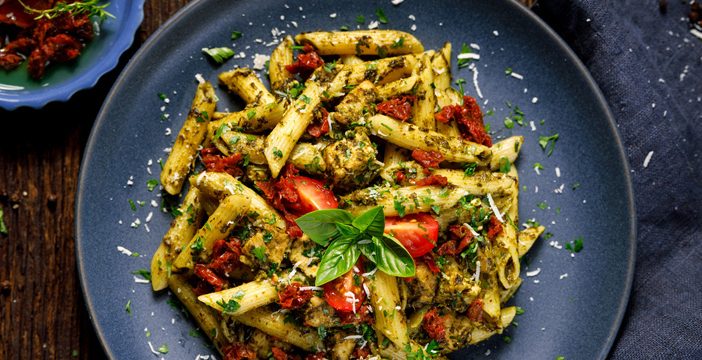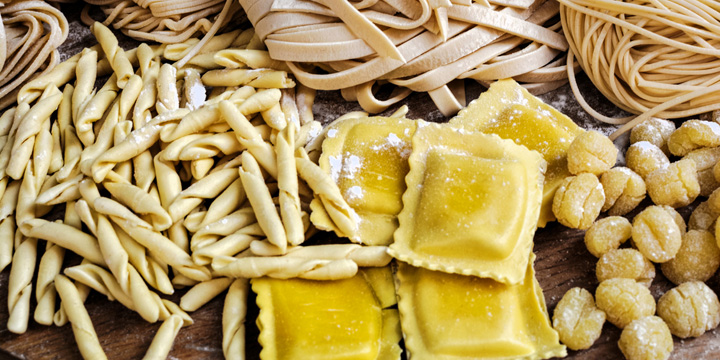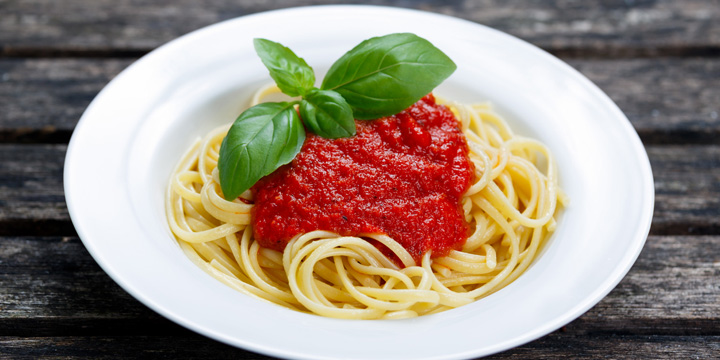
Pasta is a kitchen pantry staple. It’s inexpensive, versatile, requires little cooking expertise and it’s delicious. With the right choice and preparation, you can enjoy pasta without sending your blood sugar soaring or defeating any weight loss goals.
Read on to get 7 tips about choosing and using pasta for your diabetes diet.
Which is the best pasta to choose?
Choosing healthy pasta products is quite simple. Whether you choose fresh or dry pasta, the choices are endless. Don’t worry about the shape of the pasta. Everything from long, thin spaghetti to small, curvy elbow pasta offers the same nutritional value. It’s just a matter of preference. Check out our 7 tips below for choosing pasta.

7 tips for choosing pasta
- Choose whole grain pasta more often. Traditional pasta is made with semolina flour, which comes from refined wheat. We now have the choice of whole grain pasta, which offers the added benefit of increased fibre – up to 6 grams per serving, compared with up to 2 grams found in most traditional pastas. Look for the brand with the highest amount of fibre and be sure the label says “whole grain.” You may need to try a few different brands until you find the one that best suits your taste buds. If you’re not ready to make the leap to whole grain pasta, you can make a gradual change by introducing pasta made from a combination of whole wheat and traditional semolina. It looks and tastes more like traditional pasta, but offers additional fibre.
- Try gluten-free pasta. If you have a sensitivity or intolerance to gluten, gluten-free pasta options are available. Check that they have been processed in a dedicated gluten-free facility that has not been contaminated with gluten-containing grains. You don’t have to have a problem with gluten to enjoy this type of pasta.
- Avoid pre-packaged side dish products that come with the pasta and sauce combined. These are often high in sodium and fat.
- Choose healthy sauces and toppings. For topping off your pasta, there are many options! The healthiest offerings include a drizzle of olive oil or a low-sodium, tomato-based, homemade sauce such as marinara. Don’t forget to add plenty of vegetables, such as mushrooms, onions, zucchini or red pepper. You might consider trying this Jeweled Orchietti pasta dish.

Once you’ve chosen your pasta at the grocery store, pay attention to how you plan to prepare it and how much you plan to eat.
- Watch your portion size. Large portions of pasta can contribute to high blood sugar levels and weight gain Adding lots of vegetables to your cooked pasta can make the portion seem larger, while providing added fibre, nutrition, flavour and texture. Colourful flavoured pastas contain vegetables such as spinach; however, there is no added benefit to choosing these, since the actual amount of vegetables in a serving is negligible.
- Count your carbs. As with any food, portion size is important. To keep the carbohydrate count in check, keep your portion of cooked pasta to within your carbohydrate budget for the meal. On average, ½ cup of cooked pasta contains 15 grams of available carbohydrate. Check the Nutrition Facts table on the package for more accurate information.

- Cook pasta “al dente.” To reduce the impact that pasta has on your blood sugar, be sure to cook it “al dente,” which means it’s still firm to the bite, and not soft and overcooked. Pasta that is cooked al dente has a lower glycemic index than pasta that is cooked until it’s soft. Carbohydrate foods with a lower glycemic index don’t raise blood sugar levels as high as foods that have a higher glycemic index.
The next time you’re in the pasta aisle of the grocery store, take a minute to explore the variety of options available. Try something new, such as a whole grain or mixed-grain product. Cook it al dente, check your portion size and top it off with your favourite sauce and some vegetables.



